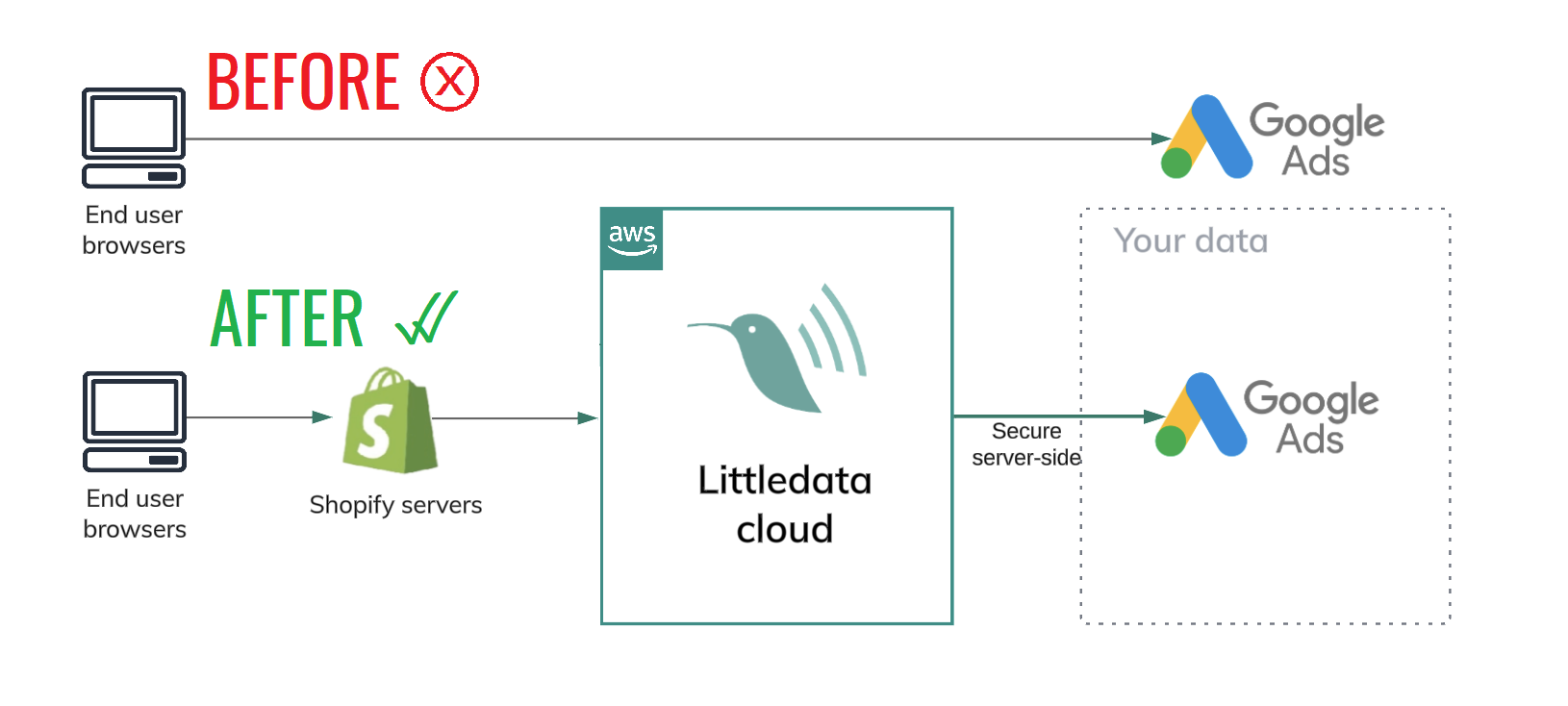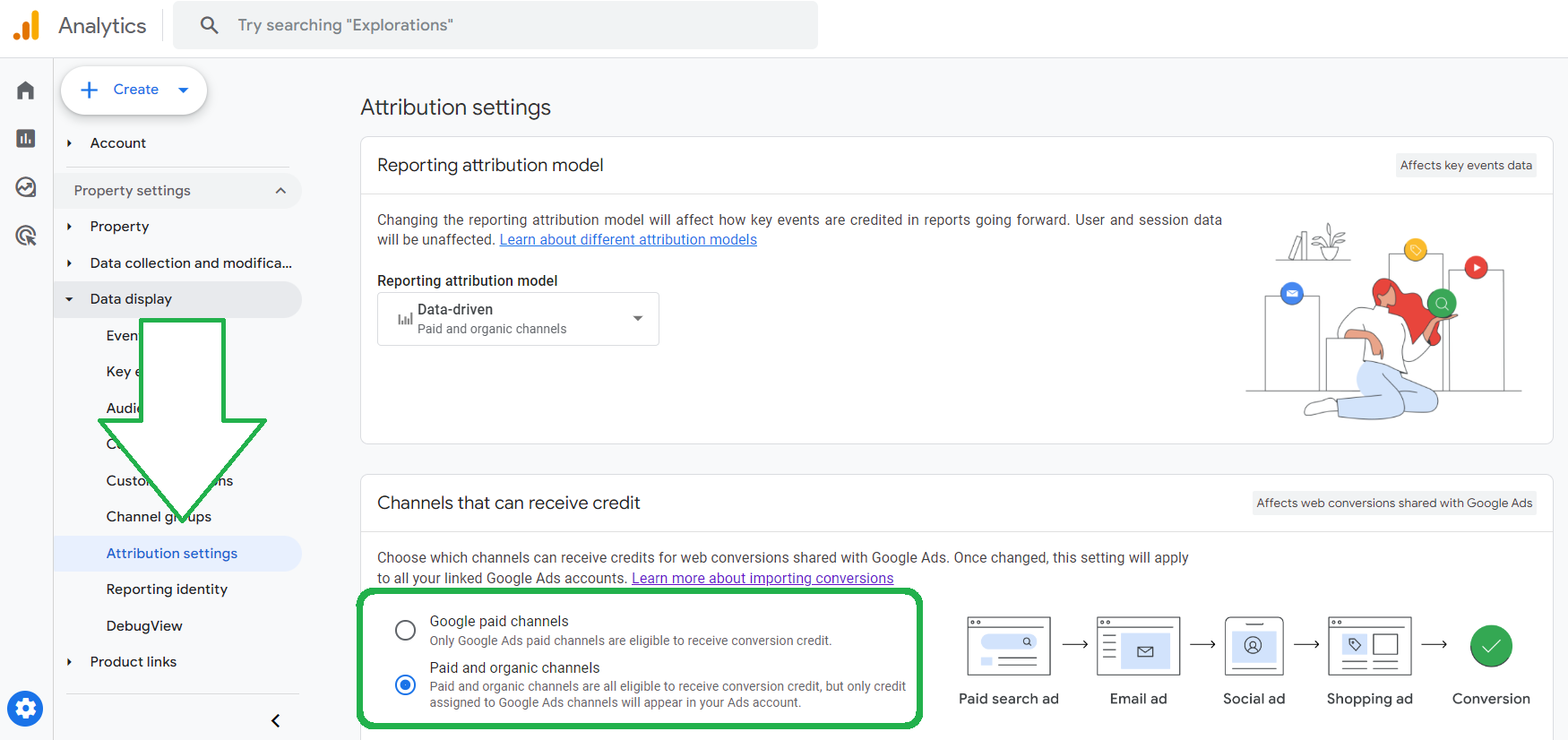Why is Google Ads server-side conversion tracking better?
For a long time, tracking of website behavior was happening directly between a user’s browser and the Google Ads tag. Everything that was shared about users' website interactions was sent directly from the browser.
For example, a visitor would click on a Google Ad, land on a website and buy something. In the background the browser would share the purchase information with Google Ads, which would “reward” the ad that was clicked with higher Ad rank (i.e. lower CPC)
With the rise of privacy issues sharing such data became harder and harder because browsers are simply having a stricter set of rules around storing and sharing information.
What is server-side tracking?
That’s where the server-side data tracking comes into play: server-side means that the website owner (and not a 3rd party platform!) gets to govern and dispatch all the data that is recorded on the website’s server.

When it comes to conversions, implementing server-side tracking allows advertisers to improve targeting and optimise performance, ultimately leading to reduced advertising costs and improved campaign effectiveness.
Littledata server-side Google Ads connection demo
Comparison with the Google Sales Channel
Shopify provides free conversion tracking into Google Ads as part of the Google & YouTube sales channel. Here's how this compares with Littledata:
| Feature | Littledata | Google Channel |
|---|---|---|
| Conversion tracking for Google Ads | ✔ | ✔ |
| Supports checkout extensibility | ✔ | ✔ |
| Tracks 100% of conversions server-side | ✔ | - |
| Enhanced Conversions | ✔ | - |
Here are 5 major advantages of tracking Google Ads conversions server-side versus traditional client-side tracking:
1. Improved Accuracy
While client-side tracking can be blocked by ad blockers and privacy-focused browsers, server side tracking is sending data from Shopify’s server directly to Google Ads - hence it’s not susceptible to these issues because it doesn't rely on browser scripts.
Such an approach reduces data loss, and as a consequence we have more accurate conversion data that helps to reduce wasted spend on underperforming ads. This process improves conversion rates over time, by perpetuating the so-called advertising loop.
Campaigns are automatically optimized based on precise data, ensuring that budget is spent on ads that drive actual conversions.
2. Data Enrichment
Littledata for Google Ads enables the data to be sent directly from Shopify servers allowing for information from multiple sources to be combined before sending to Google Ads, for a more detailed and enriched data tracking.
Server-side tracking of Google Ads conversions allows Littledata to add more hashed customer data to the events, and so better matching to a Google user.
With more matches, Google can correctly assign credit to various touchpoints in the customer journey. This helps in identifying the most effective ads, ad groups and campaigns, allowing for more efficient allocation of the advertising budget.
2. Audience segmentation
Accurate data allows for better audience segmentation and targeting. Advertisers can create more precise retargeting lists as well as exclusion lists, leading to higher conversion rates and lower Cost Per Acquisition (CPA).
Flexibility that comes with server-side tracking allows yo to switch between attribution models without hurting the credit that your google ads receive when they happen to be one of many touchpoints on the path to purchase:

3. Privacy
Server-side tracking allows for better control over the handling of sensitive information. It helps in complying with regulations like GDPR and CCPA by providing more control over what data is shared and ensuring user consent is properly managed.
4. Site Speed
Performance of the website also benefits from server-side tracking - moving away from client-side implementations reduces the number of scripts running in the user's browser, leading to faster page load times and a better user experience. On top of that the server-side tracking is more consistent, as it doesn't depend on the user's device or network conditions.
This is especially true of the checkout pages, where conversion rate can be reduced by slow loading scripts.
Client-side scripts can fail to execute due to slow page load times or user actions like navigation away from the page before the script fully loads. Server-side tracking can capture data more reliably.
Conclusion
While server-side tracking offers many benefits, it usually requires more technical expertise to set up and maintain. Littledata’s connection handles this process automatically, behind the scenes - server configuration that handles tracking requests, with constant eye on data security.
Littledata server-side tracking provides better data accuracy, enhanced security, performance improvements, and advanced tracking capabilities, making it a superior choice for tracking Google Ads conversions compared to traditional client-side methods.